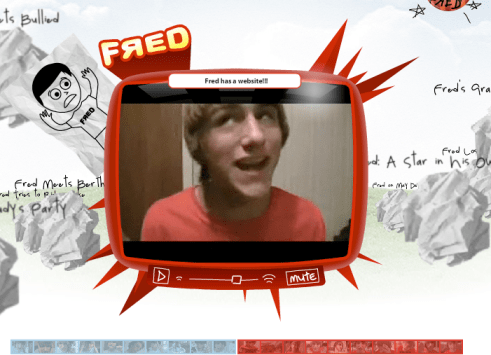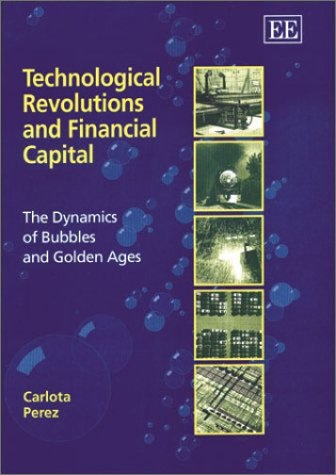[Note to readers: For those coming into this cold, I wrote Part 1 and Part 2 early in January; this one, Part 3, will be followed by a handful more in weeks to come].
I think of sensors this way: every piece of equipment capable of sensing something and sending me information about that something is in effect extending my own set of senses. A security camera outside the house extends my eyesight. If it is capable of night vision, it extends my ability to see. If it is linked to a network and allows me to “see” from afar, it allows me to sense remotely. If it has the capacity to retain what it sees and allows me to query it at a later date, it allows me to “see” into the past, to travel in time as well and in space.

Kevin Kelly (one of my favourite authors)
Sensors extend our natural senses. As I mentioned in an earlier post, this is very much in keeping with Kevin Kelly’s assertion that technology speeds up evolution. [I love having a reason to re-read essays in his Technium. Something I would commend you do, it is well worth the while].
It’s not just about enhancing an existing sense or extending the sensing capacity over distance or over time. We are also on the threshold of “sensing” new things, things we could not sense before, things that haven’t existed for long. Nobody thinks twice about our current ability to “sense” (via satnav apps) the nearest ATM, the nearest fuel selling unit, the nearest electric car charging facility.
Yup, our smart devices, and their ecosystems of hardware extensions (sometimes as wearables) and software apps, they’re all part of our rapidly expanding sensory network. Some form of Extra Sensory Perception is now reality.
It doesn’t stop there. It’s now been a few years since I first read about how we’re bringing sensors closer to home, not just by wearing them or hanging them off our smart devices, but by implanting them. Cochlear implants that, while improving our sense of hearing, also throw in, for the heck of it, an ability to sniff out wifi signal and compass direction, just to give a few examples. I guess it will only be a matter of time before people gain “x-ray vision” or an ability to see through walls. Time to dust off that William Gibson mantra again. The future’s already here, it’s just not very evenly distributed.
Some of our technology-enabled extra-sensory ability to solve time and distance issues have existed for a while. The security guard in a room somewhere looking at a wall of screens, checking for exceptions. The recording capacity attached to surveillance cameras. All ways to “sense” something and receive that sensing in a different place or at a different time.
Prior to that, the technology used to do the remote sensing was cruder. Mountain and Mahomet time. Since the remote place couldn’t come to you, you went to the remote place physically. Before video cameras, security guards used to do the rounds the old-fashioned way. Expensive, inefficient but reasonably effective. Most of you must have seen films set in the Second World War where prisoners of war escape only when the security guard is at the aphelion of his personal orbit vis-a-vis the would-be escapees.
We’ve seen this movie before. Before telephones we couldn’t speak over any real distance. Telephones conquered the distance problem, but not the time one. If the party you wished to speak to wasn’t there, tough. No tickee no washee. Then came a time when people took messages for you if you weren’t there. And left them by the phone, so you had to get to the phone to see them. Then came answerphones that looked like tape recorders, attached to the phone. The message taking facility had become a little more automated. Then you could query those messages remotely. And the capacity to hold messages increased rapidly. And then the message could call you.
That telephone-message movie is now playing out for pretty much every form of notification or alert there is.
Firehoses.
Firehoses of notifications and alerts.
So they need filters before they can be rendered useful.
Notification Class 3, Houston We Have a Problem, is a filtering mechanism. Conditional, with thresholds that can be set in advance and changed at will. Some of you will be used to IFTTT, If This Then That. Houston We Have a Problem needs IFTTT for notifications, nothing more. You don’t want the firehose. You want to know only if some exception condition is met or breached. If the doorbell rings and the only person in the house is my aged aunt who doesn’t hear too well, then make the bell ring more loudly, or make a pre-agreed light fitting flash. You get my drift. Establish the threshold for something that can be sensed remotely, then establish the notification process that is triggered when the threshold is passed.
There is a lot more to be done with the notification process in such contexts, in terms of the devices alerted, the timing of the alerts, the route taken (sound, light, movement, etc), whether the alert is persisted for later inspection, whether time series of the alerts are themselves persisted, whether there is a need for acknowledgement of the notification (and that’s a notification in itself).
Imagine the drudgery of building maintenance and you can see just how efficient it can become. No need to inspect the bulbs, batteries, toilets, rubbish chutes, whatever. Remote sensors will tell you when a threshold condition is breached. Maintenance by exception.
Enough on Class 3 for now. The next class of notification is I Am Here. The best way to think of this one is as the answer to the question “Dude, Where’s My Stuff?”. There’s a lot of motion in life, lots of stuff moving around. And people want to know about the state of that thing in motion. Are you on the train, on your way home yet? Did you get my letter? Where’s the dress I ordered? Where’s Kevin? Where’s Wally? Did you get my cheque? (No, not the one’s that’s “in the post”, along with Billy Bunter’s Postal Order or the homework that the dog ate).
Fundamentally, I Am Here signals the current position of something in motion. The requester of the notification wants to know that Elvis has Left the Building. That the Package Has Arrived. That the Train has Passed Clapham Junction. Whatever.
So many notifications, so little time. Filters needed. We need to be able to subscribe to the notifications sensibly, so there’s a pub-sub approach needed. We need to have some way of signalling conditional routing, not just about the thresholds to be tested against, but also the routes taken by the notification, the timing of the notifications, and the devices to which the notifications will be sent.
That’s enough on I Am Here for now. I will deal with further classes of notification, and start building on the subscription models and threshold conditions in later posts.






 One of those key points is to do with the “generative” web, the phrase he uses to describe the open and innovative and creative aspects of the web; JZ spends time articulating the rise of locked-down devices, services and whole environments as a direct response to the ostensibly anarchic nature of the generative web, with its inherent vulnerabilities and weaknesses. … ] The implied tension between “generative” and “secure” that is to be found in JZ’s book, resonated, in a strange kind of way, with some of the ideas in Carlota Perez’s Technological Revolutions and Financial Capital:
One of those key points is to do with the “generative” web, the phrase he uses to describe the open and innovative and creative aspects of the web; JZ spends time articulating the rise of locked-down devices, services and whole environments as a direct response to the ostensibly anarchic nature of the generative web, with its inherent vulnerabilities and weaknesses. … ] The implied tension between “generative” and “secure” that is to be found in JZ’s book, resonated, in a strange kind of way, with some of the ideas in Carlota Perez’s Technological Revolutions and Financial Capital:  The book remains one of my all-time favourites, I’ve probably read it a dozen times since it was published.
The book remains one of my all-time favourites, I’ve probably read it a dozen times since it was published.




